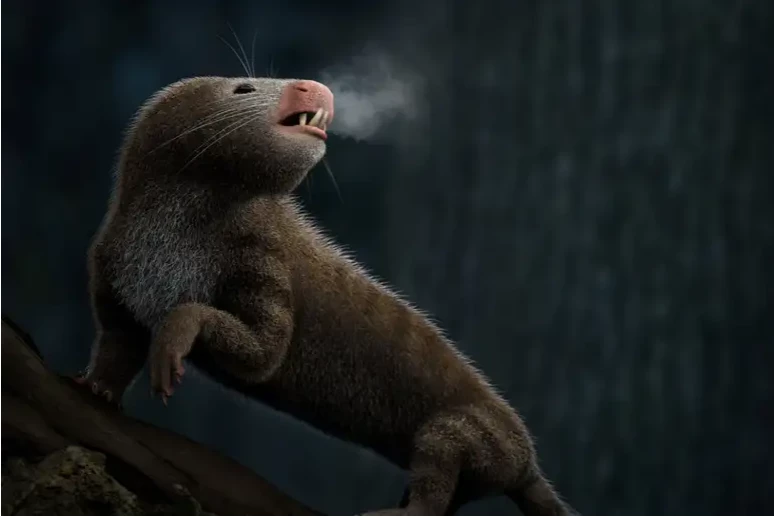Warm-blooded animals first appeared 233 million years ago, according to ear anatomy
Supermoon will peak tonight, appears up to 30% bigger and brighter in the sky / Major analysis reveals no connection between serotonin and depression
233 million years ago, the first warm-blooded animals suddenly appeared, according to evidence hidden deep within their ears. Previously, based on hazy hints from animal skeletons and their environments, scientists estimated that warm-bloodedness, or endothermy, gradually evolved over a period of about 120 million years. However, Ricardo Arajo at the University of Lisbon in Portugal and his associates hypothesized that a more accurate record could be obtained from the inner ear's bony labyrinths that contain the semicircular canals.
Animals' inner ears contain canals that are filled with fluid that aid in balance and orientation. Warm-blooded animals would, in theory, have had to evolve a different inner ear shape from their cold-blooded ancestors in order to keep their orientation system functioning since temperature affects how fluids behave.

The ability to have warm blood may have allowed the ancestors of mammals to migrate to colder regions.
Microtomography, an X-ray scanning method, was used by Arajo and his colleagues to examine the inner ears of hundreds of living creatures, including mammals, reptiles, birds, amphibians, fish, and 64 extinct species of the ancestors of modern mammals. They discovered that compared to fish, amphibians, and cold-blooded reptiles, mammals, which have warm blood, have more rounded, smaller, and thinner inner ear canals relative to their body sizes.
For instance, fish that live in cold water have "enormous" canals compared to the size of their bodies, according to Romain David, a colleague of Arajo's from the Natural History Museum in London. In terms of the semicircular canal's size, he explains, they really have some kind of gradient, from the very low body temperatures of fishes to the very high temperatures of mammals"
According to Arajo, the gradient was so reliable that the researchers quickly realized they could tell whether an animal had warm or cold blood simply by looking at its inner ear. Armed with this information, the team examined the inner ear canals of ancient specimens spanning hundreds of millions of years. They discovered that the transition from cold to warm blooded mammals occurred over a roughly one million year period in the late Triassic, 233 million years ago. Instead of being gradual as it was long believed to be, David says it was actually very abrupt.
The timeframe suggested by the team is consistent with the first known occurrence of mammaliamorphs, which are the ancestors of mammals and may have been the first mammals to have hairs and whiskers. According to Arajo, these animals' warm-bloodedness would have allowed them to travel into colder regions and stay active for longer.
However, David notes that having a warm-blooded constitution means that more food is required to meet the demands of internal heat production. That might help to explain why many species have persisted as cold-blooded creatures, especially during periods of scarcity of food and high ambient temperatures.
The researchers discovered that birds, which are warm-blooded descendants of reptiles, evolved endothermy separately from mammals, having a different impact on the shapes of the inner ear. Despite sharing some trends with mammalian inner ear canals, they don't always follow the same gradients because their inner ear fluids have a different chemical make-up.
Reference: Nature, DOI: 10.1038/s41586-022-04963-z
End of content
Không có tin nào tiếp theo
